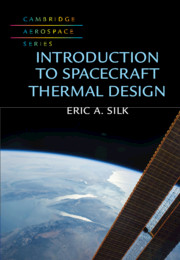Book contents
- Introduction to Spacecraft Thermal Design
- Cambridge Aerospace Series
- Introduction to Spacecraft Thermal Design
- Copyright page
- Dedication
- Contents
- Figures
- Tables
- Nomenclature
- Subscripts
- 1 Introduction
- 2 Conduction Heat Transfer Analysis
- 3 Radiative Heat Transfer Analysis
- 4 The Space Environment
- 5 Space-Based Advanced Thermal Conductance and Storage Technologies
- 6 Sensors, Instrumentation and Test Support Hardware
- 7 Fundamentals of Cryogenics
- 8 Developmental and Environmental Testing
- Book part
- Index
- Solutions
- References
7 - Fundamentals of Cryogenics
Published online by Cambridge University Press: 19 June 2020
- Introduction to Spacecraft Thermal Design
- Cambridge Aerospace Series
- Introduction to Spacecraft Thermal Design
- Copyright page
- Dedication
- Contents
- Figures
- Tables
- Nomenclature
- Subscripts
- 1 Introduction
- 2 Conduction Heat Transfer Analysis
- 3 Radiative Heat Transfer Analysis
- 4 The Space Environment
- 5 Space-Based Advanced Thermal Conductance and Storage Technologies
- 6 Sensors, Instrumentation and Test Support Hardware
- 7 Fundamentals of Cryogenics
- 8 Developmental and Environmental Testing
- Book part
- Index
- Solutions
- References
Summary
Cryogenics is an expansive technical topic that can easily fill a standalone text under the same title. This chapter is not intended to replace the extensive technical content that may be found in contemporary cryogenics engineering texts [1‒6]. Its goal is, rather, to provide the reader with some technical insights into basic cryothermal topics that arise in the design of cryogenic systems for space applications.
- Type
- Chapter
- Information
- Introduction to Spacecraft Thermal Design , pp. 284 - 332Publisher: Cambridge University PressPrint publication year: 2020



